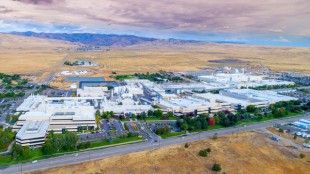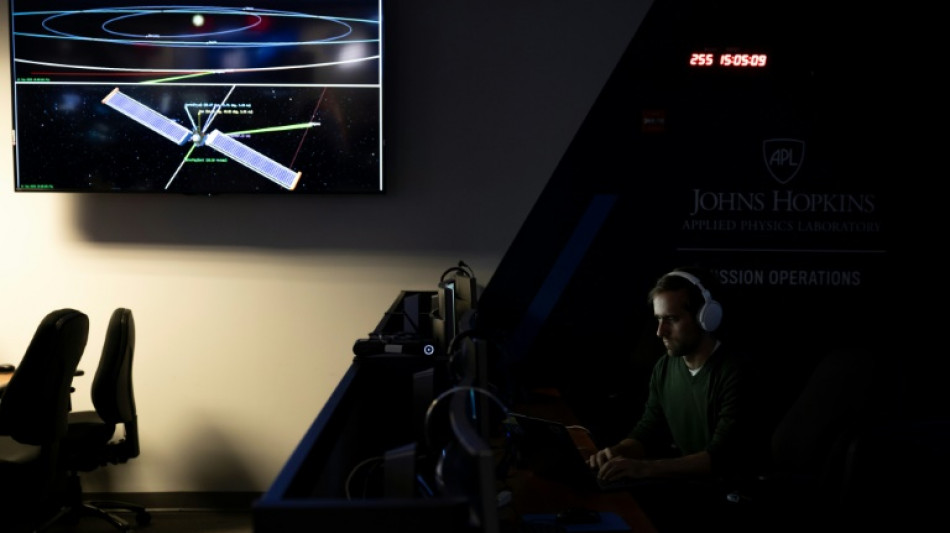
-
 Five-goal Fenerbahce rally past Feyenoord, Rangers to meet Club Brugge
Five-goal Fenerbahce rally past Feyenoord, Rangers to meet Club Brugge
-
US judge orders humane conditions for migrant detainees at NY site

-
 US indices power to fresh records after benign inflation data
US indices power to fresh records after benign inflation data
-
S. Korea's ex-first lady Kim arrested: prosecutors

-
 Alcaraz defies sweltering conditions in Cincinnati win
Alcaraz defies sweltering conditions in Cincinnati win
-
No.1 Scheffler gets new fill-in caddie for PGA playoff event

-
 Perplexity AI offers Google $34.5 bn for Chrome browser
Perplexity AI offers Google $34.5 bn for Chrome browser
-
Seales leads West Indies to ODI series victory over Pakistan
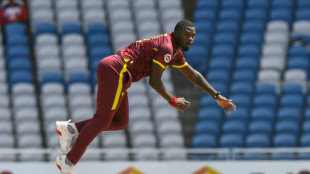
-
 Richardson apologizes to Coleman, speaks about domestic violence arrest
Richardson apologizes to Coleman, speaks about domestic violence arrest
-
Three killed in European wildfires as heatwave intensifies
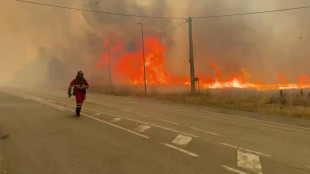
-
 PSG coach Luis Enrique wants 'different profile' to Donnarumma
PSG coach Luis Enrique wants 'different profile' to Donnarumma
-
Domestic violence charges dropped against boxing champ Davis

-
 US offers $5 mn reward for arrest of Haitian gang leader
US offers $5 mn reward for arrest of Haitian gang leader
-
Gauff advances into Cincinnati fourth round with a walkover

-
 US summit in Alaska a 'personal victory' for Putin, Zelensky says
US summit in Alaska a 'personal victory' for Putin, Zelensky says
-
MLB playoffs to start Sept. 30, World Series opener Oct. 24
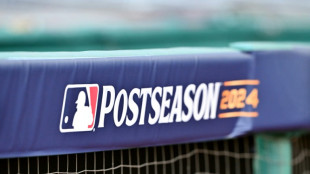
-
 White House to host cage fight on July 4: UFC boss
White House to host cage fight on July 4: UFC boss
-
Netanyahu floats 'allowing' Palestinians out of Gaza as mediators renew truce push

-
 Olympic medalist Kerley provisionally suspended for whereabouts failure
Olympic medalist Kerley provisionally suspended for whereabouts failure
-
Morata joins Serie A side Como on loan

-
 Zelensky says US summit in Alaska a 'personal victory' for Putin
Zelensky says US summit in Alaska a 'personal victory' for Putin
-
US denounces Europe on speech in pared-down rights report

-
 NBA's 80th season tips off with Rockets at Thunder on October 21
NBA's 80th season tips off with Rockets at Thunder on October 21
-
Duplantis sets new pole vault world record of 6.29m

-
 Disgraced crypto mogul Do Kwon changes plea to guilty in US court
Disgraced crypto mogul Do Kwon changes plea to guilty in US court
-
Frank confident Spurs will be 'incredibly competitive' against PSG

-
 Gaza mediators 'working very hard' to revive truce plan: Egypt
Gaza mediators 'working very hard' to revive truce plan: Egypt
-
Man City's Grealish joins Everton on season-long loan

-
 Ukraine says fighting 'difficult' after reports of Russia's rapid gains
Ukraine says fighting 'difficult' after reports of Russia's rapid gains
-
US consumer inflation holds steady but tariff risks persist

-
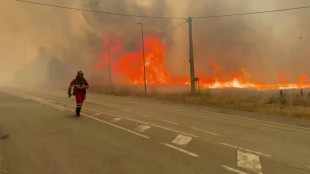 Two killed in European wildfires as heatwave intensifies
Two killed in European wildfires as heatwave intensifies
-
S.Africa to offer US new deal to avoid 30% tariff

-
 Gambia baby death heightens alarm over female genital mutilation
Gambia baby death heightens alarm over female genital mutilation
-
Soldier dies battling Montenegro wildfire

-
 Last Liverpool goal had special meaning for Jota
Last Liverpool goal had special meaning for Jota
-
Mixed crews introduced for 2027 America's Cup

-
 Stocks rise on restrained US inflation
Stocks rise on restrained US inflation
-
US consumer inflation holds steady but tariff worries persist

-
 Brevis smashes record ton as South Africa level T20 series
Brevis smashes record ton as South Africa level T20 series
-
EU ready to do plastic pollution deal 'but not at any cost'

-
 China Evergrande Group says to delist from Hong Kong
China Evergrande Group says to delist from Hong Kong
-
In China's factory heartland, warehouses weather Trump tariffs

-
 Palace claim sporting merit 'meaningless' after Europa League demotion
Palace claim sporting merit 'meaningless' after Europa League demotion
-
Former Premier League referee Coote given eight-week ban over Klopp comments

-
 Council of Europe cautions on weapon sales to Israel
Council of Europe cautions on weapon sales to Israel
-
The Elders group of global leaders warns of Gaza 'genocide'

-
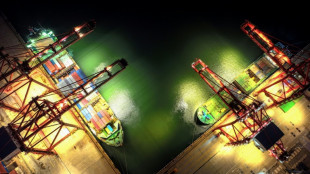 Stocks gain on China-US truce, before key inflation data
Stocks gain on China-US truce, before key inflation data
-
Man killed in Spain wildfire as European heatwave intensifies
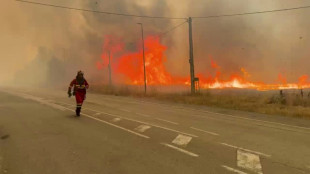
-
 US, China extend tariff truce for 90 days
US, China extend tariff truce for 90 days
-
Families mourn 40 years since deadly Japan Airlines crash

| RBGPF | 0% | 73.08 | $ | |
| RYCEF | 3.11% | 14.8 | $ | |
| CMSC | 0.09% | 23.08 | $ | |
| SCU | 0% | 12.72 | $ | |
| NGG | -1.35% | 70.28 | $ | |
| RELX | -0.44% | 47.83 | $ | |
| GSK | 1.33% | 38.22 | $ | |
| SCS | 1.42% | 16.19 | $ | |
| BP | 0.35% | 34.07 | $ | |
| BCC | 4.18% | 84.26 | $ | |
| VOD | 0.26% | 11.54 | $ | |
| CMSD | -0.05% | 23.56 | $ | |
| RIO | 1.52% | 63.1 | $ | |
| BTI | -0.71% | 57.92 | $ | |
| JRI | -0.07% | 13.38 | $ | |
| AZN | 1.69% | 75.34 | $ | |
| BCE | 0.61% | 24.5 | $ |

NASA gears up to deflect asteroid, in key test of planetary defense
Bet the dinosaurs wish they'd thought of this.
NASA on Monday will attempt a feat humanity has never before accomplished: deliberately smacking a spacecraft into an asteroid to slightly deflect its orbit, in a key test of our ability to stop cosmic objects from devastating life on Earth.
The Double Asteroid Redirection Test (DART) spaceship launched from California last November and is fast approaching its target, which it will strike at roughly 14,000 miles per hour (23,000 kph).
To be sure, neither the asteroid moonlet Dimorphos, nor the big brother it orbits, called Didymos, pose any threat as the pair loop the Sun, passing some seven million miles from Earth at nearest approach.
But the experiment is one NASA has deemed important to carry out before an actual need is discovered.
"This is an exciting time, not only for the agency, but in space history and in the history of humankind quite frankly," Lindley Johnson, a planetary defense officer for NASA told reporters in a briefing Thursday.
If all goes to plan, impact between the car-sized spacecraft, and the 530-foot (160 meters, or two Statues of Liberty) asteroid should take place at 7:14pm Eastern Time (2314 GMT), and can be followed on a NASA livestream.
By striking Dimorphos head on, NASA hopes to push it into a smaller orbit, shaving ten minutes off the time it takes to encircle Didymos, which is currently 11 hours and 55 minutes -- a change that will be detected by ground telescopes in the days that follow.
The proof-of-concept experiment will make a reality what has before only been attempted in science fiction -- notably films such as "Armageddon" and "Don't Look Up."
- Technically challenging -
As the craft propels itself through space, flying autonomously for the mission's final phase like a self-guided missile, its main camera system, called DRACO, will start to beam down the very first pictures of Dimorphos.
"It's going to start off as a little point of light and then eventually it's going to zoom and fill the whole entire field of view," said Nancy Chabot of Johns Hopkins Applied Physics Laboratory (APL), which hosts mission control in a recent briefing.
"These images will continue until they don't," added the planetary scientist.
Minutes later, a toaster-sized satellite called LICIACube, which separated from DART a couple of weeks earlier, will make a close pass of the site to capture images of the collision and the ejecta -- the pulverized rock thrown off by impact.
LICIACube's picture will be sent back in the weeks and months that follow.
Also watching the event: an array of telescopes, both on Earth and in space -- including the recently operational James Webb -- which might be able to see a brightening cloud of dust.
Finally, a full picture of what the system looks like will be revealed when a European Space Agency mission four years down the line called Hera arrives to survey Dimorphos's surface and measure its mass, which scientists can only guess at currently.
- Being prepared -
Very few of the billions of asteroids and comets in our solar system are considered potentially hazardous to our planet, and none in the next hundred or so years.
But "I guarantee to you that if you wait long enough, there will be an object," said Thomas Zurbuchen, NASA's chief scientist.
We know that from the geological record -- for example, the six-mile wide Chicxulub asteroid struck Earth 66 million years ago, plunging the world into a long winter that led to the mass extinction of the dinosaurs along with 75 percent of species.
An asteroid the size of Dimorphos, by contrast, would only cause a regional impact, such as devastating a city, albeit with a greater force than any nuclear bomb in history.
Scientists are also hoping to glean valuable new information that can inform them about the nature of asteroids more generally.
How much momentum DART imparts on Dimorphos will depend on whether the asteroid is solid rock, or more like a "rubbish pile" of boulders bound by mutual gravity, a property that's not yet known.
We also don't know its actual shape: whether it's more like a dog bone or a donut, but NASA engineers are confident DART's SmartNav guidance system will hit its target.
If it misses, NASA will have another shot in two years' time, with the spaceship containing just enough fuel for another pass.
But if it succeeds, then it's a first step towards a world capable of defending itself from a future existential threat, said Chabot.
B.Khalifa--SF-PST

